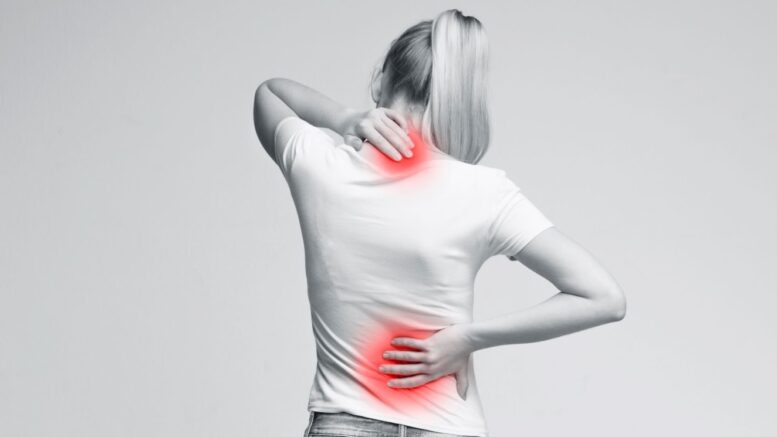There’s an old saying that goes like this: pain is a sign that one is alive. Indeed, it’s a sensation said to be a common experience for many people, and managing it can be challenging.
Luckily, there are many options prescribed by pain management doctor and experts worldwide with regard to pain. A popular and straightforward pain relief option you can avail yourself of is opioids.
Opioids, sometimes called narcotics, are prescription drugs medical experts administer to help patients with chronic bodily pain. The drug owes its pain relief properties thanks to its chemical structure and how it reacts to the body’s pain receptors.
While opioids are often prescribed for pain relief, they come with risks such as addiction and overdose due to unsupervised use. As a result, this has led to the mass movement of people seeking non-opioid approaches to pain management.
Fortunately, this post will list and explore some of the most effective non-opioid options available that you can use for your pain with the guidance of your physician. Read on to learn more.
Non-Opioid Medications
One of the first options for non-opioid pain management is using non-opioid medications. These include anti-inflammatory drugs, acetaminophen, antidepressants, and anticonvulsants. These medications work in different ways to reduce pain and inflammation.
For example, anti-inflammatory drugs reduce inflammation, which can help alleviate pain. Acetaminophen is effective for mild to moderate pain, while antidepressants and anticonvulsants can help with nerve pain.
Working with a licensed pain management doctor is essential to determine the best medication for your needs. In some cases, injections, like epidural steroid injections, may be an option too. These injections deliver medication directly to the affected area, providing targeted pain relief immediately.
Physical Therapy
Physical therapy is another effective non-opioid approach to pain management. A physical therapist (PT) is an expert healthcare provider that can help improve the affected body area’s mobility, strength, and function. This can help reduce pain and improve overall quality of life.
Make sure you work with a licensed PT in your area recommended by your medical doctor to take advantage of the benefits of physical therapy fully.
Complementary Treatments
In addition to medications and physical therapy, complementary treatments can help with pain management too. These include acupuncture, therapeutic massage, yoga, and meditation. These treatments work in different ways to reduce stress and tension in the body, which can help alleviate pain.
Acupuncture
Acupuncture is an ancient medical art first practiced in China a few thousand years ago. It relies mainly on the Chinese concept that the body has a flow of energy called ‘qi,’ and a perfect balance leads to optimum health. Thus, needles are inserted in certain points of the body to direct qi to its optimal flow path to achieve such balance.

And did you know that it’s believed that there are certain points on the body that tap into the pain a person is suffering with? With acupuncture, this can be targeted and addressed. It’s said that the art of acupuncture can help with various types of pain.
Therapeutic Massage
Are you experiencing a stiff neck? No worries. A simple therapeutic massage can handle that just fine. In fact, massage is believed to help provide relief to tense muscles, painful joints, and so on.
Therapeutic massage works its magic by applying controlled forces on certain areas of the body to prevent the nerves from sending pain signals directly to the brain.
Yoga
Yoga is another ancient practice used to help with pain management. Originating from the Indian subcontinent hundreds of years ago, it’s a medical technique involving the patient getting in on various bodily positions – all promoting mindfulness, proper posture, and optimal breathing.
It’s believed that by practicing yoga, you can enjoy multiple pain-related benefits like better mobility, relaxation, and others.
Meditation
The mind is the master of the body. Thus, it’s a very powerful force that can be forged to follow one’s will.
Meditation is the practice of self-introspection to better forge a body-mind connection. Scientists found out that mindfulness meditation, a special type of meditation, can help with pain management. This is made possible because meditation releases a chemical called endorphins, the so-called natural painkillers of humans.
It’s said that the abovementioned complementary treatments are much more helpful if used in conjuncture with other non-opioid pain treatment regimens as recommended by your physician.
High-Tech Treatments
There are also high-tech treatments available for pain management that do not involve opioids. These include treatments using radio waves and electrical signals. For example, transcutaneous electrical nerve stimulation (TENS) uses electrical signals to stimulate nerves and reduce pain.
Conclusion
In conclusion, there are many effective non-opioid approaches to pain management. These include medications, physical therapy, complementary treatments, and high-tech treatments. It’s important to work with a healthcare professional to determine the best approach for your specific needs. By exploring these options, you can find safe and effective ways to manage your pain without relying on opioids.
